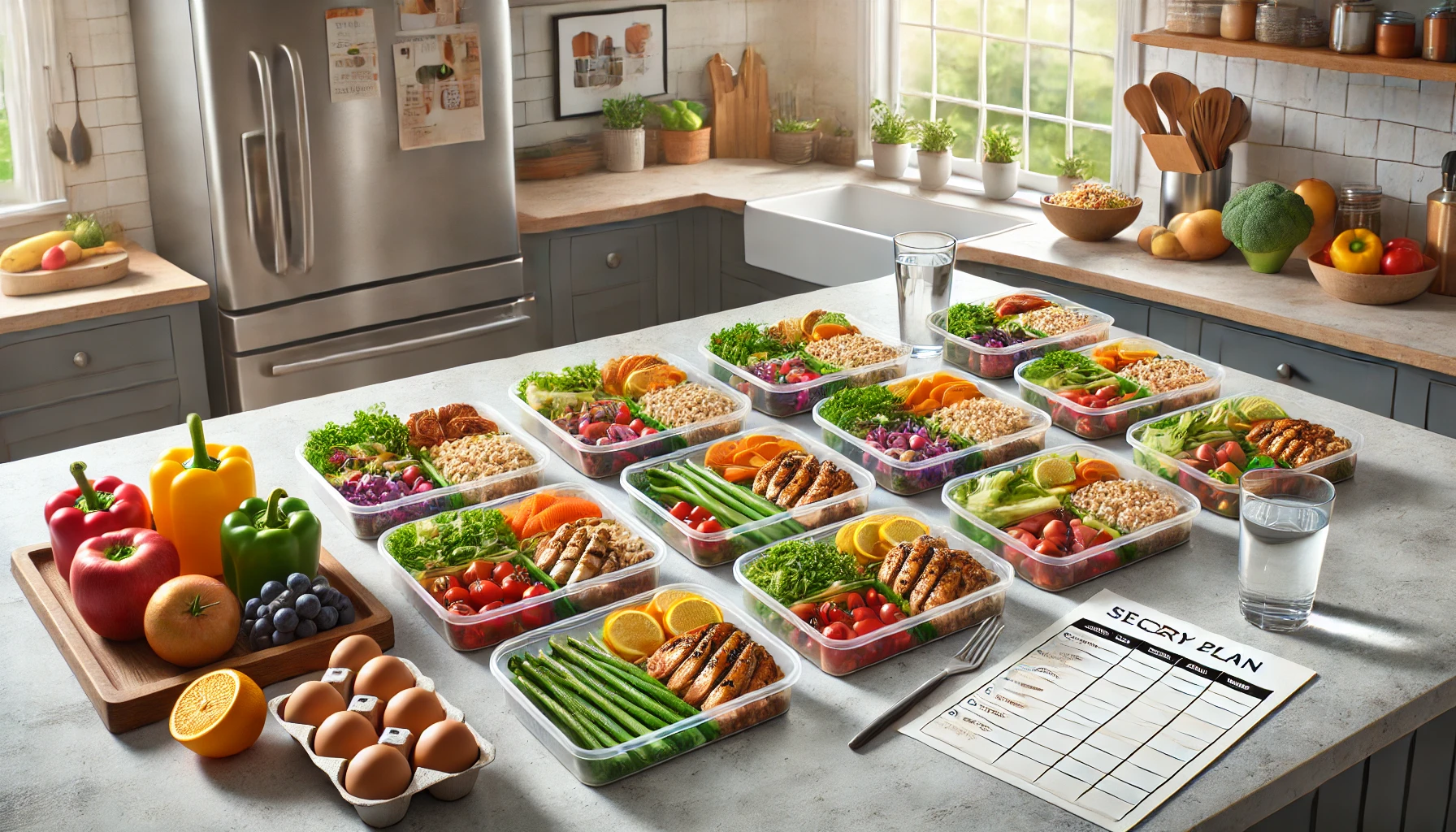When you’re trying to lose weight, figuring out what to eat can feel like the hardest part. Between work, family, and a busy schedule, it’s easy to fall back into takeout or snacks that derail your progress.
That’s where a weekly meal plan comes in. It helps you stay organized, saves time, reduces stress, and — most importantly — supports your weight loss in a sustainable way. The goal isn’t to eat perfectly, but to eat consistently better.
Let’s walk through how to build a practical, delicious, and healthy weekly meal plan that works for real life.
Why a Meal Plan Helps You Lose Weight
Having a plan removes the guesswork from eating. You’re less likely to reach for unhealthy snacks or overeat when meals are prepped in advance.
Key benefits:
- Prevents impulsive eating
- Supports portion control
- Helps you balance macronutrients
- Saves time and money during the week
- Reduces food waste
Step 1: Understand Your Nutritional Needs
Everyone’s calorie and nutrient needs are different. But in general, a good weight loss plan includes:
- Lean protein (chicken, fish, tofu, eggs)
- Complex carbs (brown rice, oats, quinoa, sweet potatoes)
- Healthy fats (avocados, nuts, olive oil)
- Lots of fiber from fruits and vegetables
- Plenty of water
You don’t have to count every calorie — just aim to include balanced meals and stay within a moderate calorie deficit.
Step 2: Pick a Meal Planning Method That Works for You
Choose a style that fits your personality and lifestyle:
🧊 Batch Cooking:
Cook multiple meals ahead (e.g., Sunday meal prep) and store them in containers for the week.
🍽️ Theme Days:
Assign meal types to each day:
- Monday: Meatless
- Tuesday: Stir-fry
- Wednesday: Grain bowls
- Thursday: Pasta (healthy versions)
- Friday: Wraps or tacos
- Weekend: Leftovers or freezer meals
📋 Menu Planning:
Write out each meal for the week, including snacks. Shop based on that list.
Step 3: Plan Each Meal for Balance
Each meal should include:
- A source of protein
- A complex carb
- A healthy fat
- A vegetable or fruit
This combo keeps blood sugar stable, boosts energy, and keeps you full longer.
Example Breakfasts:
- Oatmeal with banana, almond butter, and chia seeds
- Greek yogurt with berries and granola
- Scrambled eggs with spinach and whole-grain toast
Example Lunches:
- Grilled chicken bowl with quinoa, broccoli, and avocado
- Turkey and hummus wrap with side salad
- Lentil soup with a slice of whole-grain bread
Example Dinners:
- Baked salmon with roasted sweet potatoes and green beans
- Stir-fried tofu with brown rice and mixed veggies
- Ground turkey chili with kidney beans and bell peppers
Snacks:
- Carrot sticks with hummus
- Apple with peanut butter
- Hard-boiled eggs
- Cottage cheese with pineapple
- A handful of almonds
Step 4: Make a Grocery List (and Stick to It)
After writing your menu, create a grocery list by category:
- Produce
- Proteins
- Grains
- Dairy
- Pantry items
- Frozen foods
Shop with your list and avoid impulse buys. This helps keep your budget and nutrition goals on track.
Step 5: Prep What You Can Ahead of Time
Set aside a couple of hours to get a head start on your week.
What to prep:
- Chop vegetables
- Cook grains like rice or quinoa
- Bake or grill protein in bulk
- Portion out snacks
- Prepare overnight oats or breakfast muffins
Even 1–2 hours of prep can save hours of cooking later!
Step 6: Stay Flexible
Life happens — plans change. It’s okay to swap meals or use leftovers.
Tips for flexibility:
- Keep 1–2 quick, healthy frozen meals on hand
- Batch-cook extra portions to freeze for busy nights
- Keep backup staples: canned beans, tuna, brown rice, frozen veggies
Don’t aim for perfection. Aim for progress and consistency.
Sample 3-Day Meal Plan
Day 1
Breakfast: Oatmeal with cinnamon and chopped apple
Snack: Greek yogurt with honey
Lunch: Grilled chicken salad with olive oil vinaigrette
Snack: Handful of almonds
Dinner: Baked salmon, quinoa, steamed broccoli
Day 2
Breakfast: Scrambled eggs with spinach, toast
Snack: Apple with peanut butter
Lunch: Tuna wrap with side salad
Snack: Baby carrots and hummus
Dinner: Stir-fried tofu, brown rice, snap peas
Day 3
Breakfast: Overnight oats with banana and chia
Snack: Cottage cheese with pineapple
Lunch: Lentil soup and whole grain crackers
Snack: Boiled egg and fruit
Dinner: Turkey chili with side of roasted veggies
Meal Planning = Freedom, Not Restriction
A weekly meal plan isn’t about strict rules — it’s about supporting your goals with structure and intention. When you take control of your meals, you take control of your health.
With the right ingredients, a bit of planning, and a flexible mindset, healthy eating becomes something you enjoy — not something you dread.
You’ve got this!

